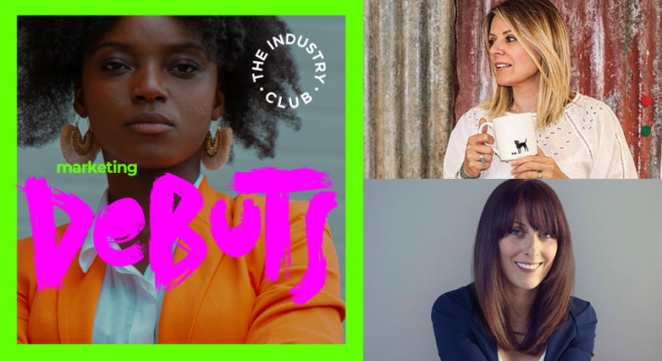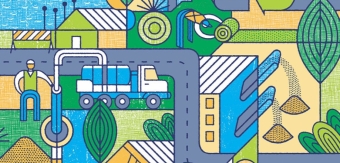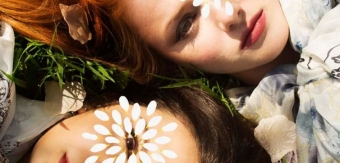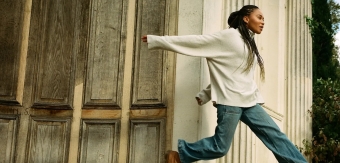So the industry isn’t diverse enough. Big surprise, huh? You’ve heard it a lot in the past year, that we’re still “a long way ahead” of where we should be in terms of inclusion for underrepresented talent. Diversity in the industry is still a problem.
But when you stop to actually try to look at the extent of the issue, it’s clear how ridiculous the whole situation is. Covid could worsen this reality for LGBT, BAME and women professionals looking to have a long and successful career in the creative industries.
If, like me, you’ve been fooling yourself believing that we’re all making incredibly active steps towards a more diverse world, let me tell you a brief story. Just this week, the Global 500 2021 Brand Guardianship indexindicated that only eight women are in the Top 100 CEOs across any kind of sector, from tech to retail and beyond.
And in 2019, the Harvard Business Review put together a similar list with the “best-performing CEOs in the world.” Only five of those were women.
Guess how many from the creative industry?
Zero.

Image credit: Annual 2016 Gold Winner Fran Mendez
Let’s talk numbers
I find it quite hard to believe that only five women in the world have the potential to climb the HBR rankings. But it can happen, when you just don’t have enough opportunities to shine.
Some six years ago, women were holding about 36% of creative jobs in the industry. You will argue that a lot has changed since 2014 – except it really hasn’t. It turns out that in 2017, little more than three years ago, only 11.5% of creative directors in the US were women. And while that number may be on the rise, it is still, painfully low.
We can see a similar percentage in roles filled by black, Asian and minority ethnic professionals. Still in 2017, the Creative Industries Federation found that around 11% of industry jobs were filled by minority ethnic people.
And again in 2018, LGBT representation in the industry was at a record low, with not one single company from the creative and brand industries present in the Stonewall Workplace Equality Index.
There seems to be a discouraging absence of recent studies and surveys on the current state of the industry several years later (or maybe I looked in the wrong places!), but judging by the kinds of stories I heard last year when the BLM movement exploded, I don’t think we’ve travelled that far from where we were in 2017/2018. During Pride Month 2020, the Gate London Copywriter Rickie Marsden said that “many seem to feel inclusivity ends at an invitation” and there are just too many stories of racism or sexism in the industry that are just too blatant to ignore.
Things need to change. Though certainly Covid hasn’t helped.

Image credit: Zulu Alpha Kilo
What Covid did to the usual channels of entry
Traditionally, young talent wanting to enter the industry will do so via bespoke channels and initiatives set in place to attract the best talent out of university. On paper, this offers equal opportunities. But it also overlooks some aspects of representation that not everyone may be aware of.
Graduate schemes and apprenticeships are an excellent way to attract talent, and by prioritising diverse hires in the industry, companies can truly make a difference. The problem is that Covid has hindered access to the creative industries for many underrepresented groups.
Last year, Creative Access surveyed more than 250 young people and found out that 85% of trainees in June were not being kept on after their internships, or that they were unsure if they would be. 89% of the respondents were from BAME backgrounds. 85% were female.
Around 50% of unemployed creatives early last year had lost their job due to Covid-19
Around the same time, we at Creativepool discovered that 50% of the unemployed creatives at the time had lost their job due to Coronavirus, and that some job offers were being cancelled.
Covid put a definite strain on the graduates and trainees looking to enter the industry last year, and there’s no doubt that the aftermath of this talent disaster is will affect a large percentage of ambitious creative professionals. Sure, we might see many of these opting for self-employment and a freelance career – but that’s not the point. If everybody on the planet wanted be a freelancer, there would be no point in having offices at all.
Luckily there are some who are working to help in these difficult times. Not long ago I had a nice chat with Melissa Smith from the Industry Club, who set up an apprenticeship scheme for agencies called Marketing Debuts. The scheme was designed for young talent in the industry and though it wasn’t specifically for BAME backgrounds, it did have a strong focus on those too. #StandOutWithHonor was another strong 2020 programme for young talent worth mentioning here.

Marketing Debuts, the apprenticeship programme envisioned by the Industry Club
What to do and why it matters
I could talk endlessly about this topic, and, in fact, I believe I already did several times. There are actions that all employers can take to ensure more diversity and inclusion in the creative industry. They are certainly not easy, and they will require resources – but change isn’t going to magically happen if we stand still and wait for a miracle.
Agencies should find ways to prioritise diverse hires, while still offering equal opportunities to everybody. Diversity is more than just culture or skin colour and it can actually bring a lot of different creative inputs to the table. Agencies willing to pump up their female, LGBT or BAME hires will see a sudden change in their narrative in a matter of months, and their entire creative work will be revolutionised thanks to that.
But in order to set the right initiatives and programmes in place, it is essential to listen to other people’s experiences. Find a way to get in touch with those who are struggling to enter the industry, talk to those who are discriminated against either in your team or outside, and learn more about their challenges and stories. You’re an agency, after all – solving challenges is what you do for a living.
Diversity is not a risk – it's any business' chance to shine
Also keep in mind that many of these creative professionals may come from difficult backgrounds, where there is no actual perception of the kind of value and success that a creative career can bring to an individual. Partnering with schools and institutions to intercept this young talent early on can be another approach to ensure new channels of entry into the industry. No one is going to come to you if they don’t know that you exist, right?
Or you could just go ahead and keep doing what you’ve been doing all this time. If it worked before, why take risks? But here’s the thing – diversity is not a risk. It is an opportunity, one to build a better world, a better industry, and better work in your own business. Diversity is a chance to shine – not an early sign of failure. I am yet to hear stories about an agency that was hindered by its internal diversity.
I’m certainly hearing more of those from agencies that are not diverse at all.






